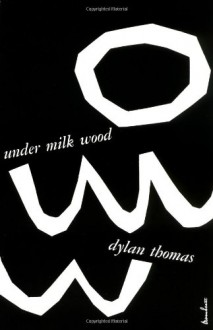 Brief Chronology
Brief ChronologyPOEMS
18 Poems
--I see the boys of summer
--When once the twilight locks
--A process in the weather of the heart
--Before I knocked
--The force that through the green fuse
--My hero bares his nerves
--Where once the waters of your face
--If I were tickled by the rub of love
--Our eunuch dreams
--Especially when the October wind
--When, like a running grave
--From love's first fever
--In the beginning
--Light breaks where no sun shines
--I fellowed sleep
--I dreamed my genesis
--My world is pyramid
--All all and all
Twenty-Five Poems
--I, in my intricate image
--This bread I break
--Incarnate devil
--Today, this insect
--The seed-at-zero
--Shall gods be said
--Here in this spring
--Do you not father me
--Out of the sighs
--Hold hard, these ancient minutes
--Was there a time
--Now
--Why east wind chills
--A grief ago
--How soon the servant sun
--Ears in the turrets hear
--Foster the light
--The hand that signed the paper
--Should lanterns shine
--I have longed to move away
--Find meat on bones
--Grief thief of time
--And death shall have no dominion
--Then was my neophyte
--Altarwise by owl-light
The Map of Love
--Because the pleasure-bird whistles
--I make this in a warring absence
--When all my five and country senses
--We lying by seasand
--It is the sinners' dust-tongued bell
--O make me a mask
--The spire cranes
--After the funeral
--Once it was the colour of saying
--Not from this anger
--How shall my animal
--The tombstone told
--On no work of words
--A saint about to fall
--If my head hurt a hair's foot
--Twenty-four years
Deaths and Entrances
--The conversation of prayers
--A Refusal to Mourn the Death, by Fire, of a Child in London
--Poem in October
--This side of the truth
--To Others than You
--Love in the Asylum
--Unluckily for a death
--The hunchback in the park
--Into her lying down head
--Paper and sticks
--Deaths and Entrances
--A Winter's Tale
--On a Wedding Anniversary
--There was a saviour
--On the Marriage of a Virgin
--In my craft or sullen art
--Ceremony After a Fire Raid
--Once below a time
--When I woke
--Among those Killed in the Dawn Raid was a Man Aged a Hundred
--Lie still, sleep becalmed
--Vision and Prayer
--Ballad of the Long-legged Bait
--Holy Spring
--Fern Hill
In Country Sleep
--In Country Sleep
--Over Sir John's hill
--Poem on his Birthday
--Do not go gentle into that good night
--Lament
--In the White Giant's Thigh
STORIES
--After the Fair
--The Tree
--The Dress
--The Visitor
--The Vest
Portrait of the Artist as a Young Dog
--The Peaches
--A Visit to Grandpa's
--Patricia, Edith, and Arnold
--The Fight
--Extraordinary Little Cough
--Just Like Little Dogs
--Where Tawe Flows
--Who Do You Wish Was With Us?
--Old Garbo
--One Warm Saturday
--The Followers
--A Story
BROADCASTS
--Memories of Christmas
--Holiday Memory
--The Festival Exhibition
--A Visit to America
--Return Journey
--Under Milk Wood

 Log in with Facebook
Log in with Facebook 
 What is one to make of the book-as-artifact?
What is one to make of the book-as-artifact?







